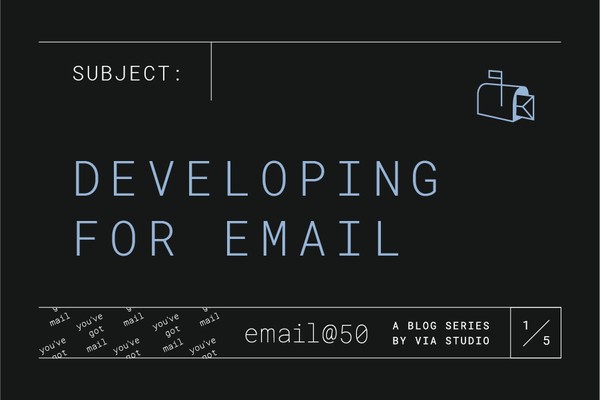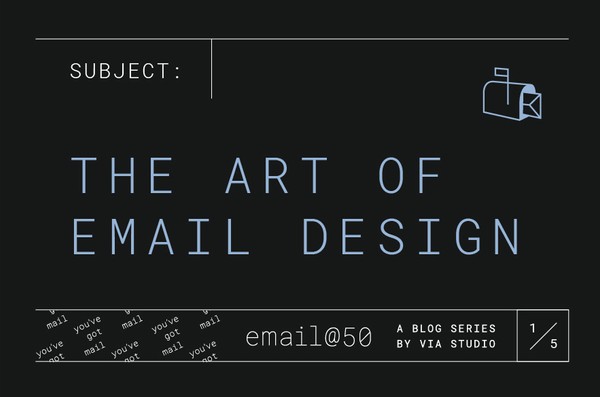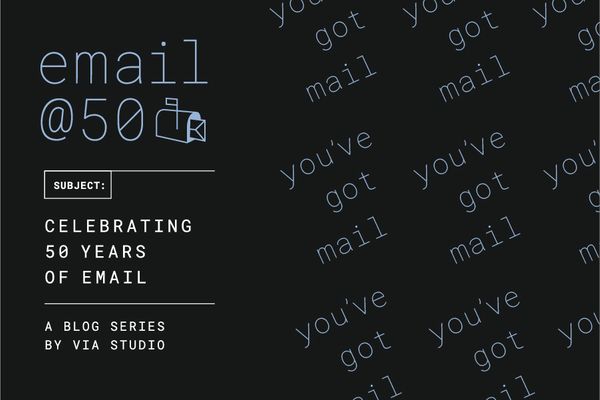
Email @ 50 Series: A Brief History
By:
Nick Wunderlin
on 4/19/2021
Welcome to the “Email @ 50” blog series! Within this series, we will reflect on the past and predict the future of a form of communication that has shaped our personal and professional lives over the past 50 years.
Email's Humble Origins
The first email trials began in 1969, as transfers between computer systems were attempted shortly after ARPANET launched. However, in 1971, electrical engineer and MIT graduate Ray Tomlinson sent what is believed to be the first true email. This electronic correspondence was the first to include the ubiquitous “@” sign to separate the user’s name and the user's computer. How far did this first email “travel”? Not far at all, the two computers used in this experiment were right next to each other.
Through most of the 1970s and 1980s, email was viewed with either skepticism or as some sort of novelty. There were still significant developments in this new form of communication, including Queen Elizabeth becoming the first head of state to send an email in 1976. However, it wasn’t until 1988 that Microsoft Mail was released. Macintosh computer users could use a Microsoft program to send messages to each other on Apple’s AppleTalk Networks in what now seems like an unheard-of partnership. Lotus Notes from IBM launched the following year in 1989.
In the early 1990s, two significant developments in email history occurred: In 1992, researchers Nathaniel Borenstein and Ned Freed wrote the Multipurpose Internet Mail Extension (Mime) protocol which is still used for email attachments today.
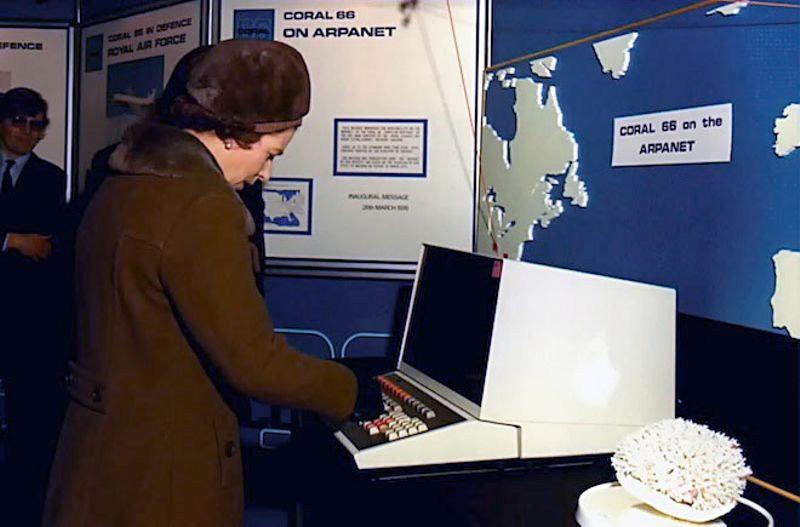
Queen Elizabeth sends her first email in 1976
Credit: Peter Kirsten
Email Goes Mainstream
The 1990s is when email usage finally became mainstream. America Online (AOL) and Microsoft Outlook both launched in the first half of the decade and rapidly acquired larger shares of the personal and professional email market. At its peak, with a market capitalization of more than $200 billion, AOL was dominating email, internet access, online news, and instant messaging. Meanwhile, Microsoft Outlook slowly came to be synonymous with “professional email” usage. This wouldn’t last long though, as AOL lost market share as quickly as they had initially gained it in the 2000s.
Email became a part of everyday life by the late 1990s and early 2000s. Email chains became the precursor to modern-day “memes,” and emails began replacing the “memo” as the preferred intra-office communication method. Bill Clinton became the first U.S. President to send an email in 1998 when he sent a message to U.S. astronauts orbiting the earth.
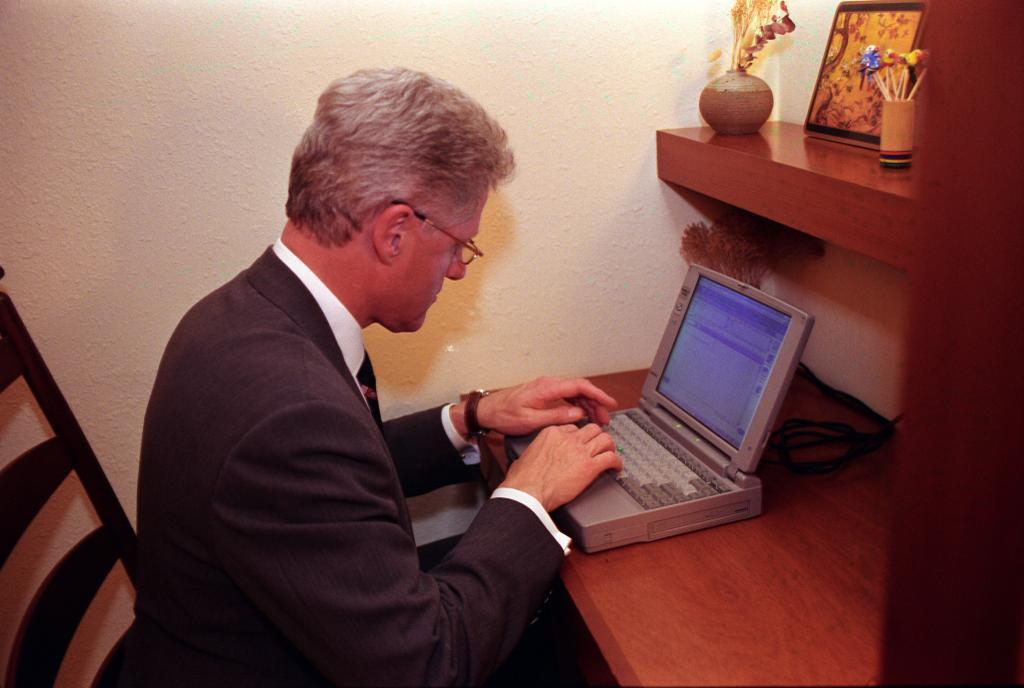
President Bill Clinton emails astronaut John Glenn in 1998
Credit: Bill Clinton
During this time, email users became accustomed to sitting down at a desktop computer to send emails. All the while, researchers and engineers were attempting to make email accessible anywhere, including away from desktop computers. Early attempts at “mobile” email were largely unsuccessful until the mid-2000s.
The Rise of Smart Phones and On The Go Email
In 2003, BlackBerry, formerly called Research in Motion, unveiled the BlackBerry 6210, the first mobile BlackBerry device to offer a web browser, testing, and… email. Four years later, in 2007, Apple unveiled the first iPhone. For the next few years, BlackBerry, iPhone, and later Android devices allowed users to access emails from almost anywhere, as long as they had cell phone service.
Since the introduction of smartphones with email access nearly 15 years ago, for better or worse, email has become an inseparable part of our professional and personal lives. By 2018, IBM estimated that 60% of all emails opened were opened on mobile devices.
Here in 2021, email has become a ubiquitous part of our lives. Professionally, email has become the dominant method of communication. With the rise of smartphone usage and email being accessible anywhere, it can be debated whether email is a good or bad development for our work/life balance.
However, email can still be a force for good, helping connect family and friends who may be on other sides of the globe, reducing the use of paper and other physical materials associated with physical mail, and who doesn’t love receiving a good cat or dog email?
The following articles in this series will look at the use and evolution of email marketing and advertising. This series will look at the effectiveness of email marketing, the evolution of email design and development, and looking ahead to what the future might hold for email.
We hope you enjoy and maybe even share some of this content via email with your own professional or personal networks!
View All Entries in the Email @ 50 Series:
Part I: Email @ 50: Email Marketing Still Works... Half a Century Later
Part II: Email @ 50: The Art of Email Design
Related Posts
Email @ 50: Email Development
By:Nick Stewart on 8/6/2021
Email development has always been the bane of a web developer's existence. You have to use outdated methods and don't have access to the full modern web to create a nice looking email that thousands of people will see. It's like asking a Nascar mechanic to create a car using only tools from the 90s - it can be done but its more than a pain.
Read More »Email @ 50: The Art of Email Design
By:Morgan Plappert on 8/6/2021
I remember when I first started out as a designer (professionally), having to play Photoshop Tetris with cut up image blocks to piece together a full email layout. As a UX designer, we are taught that nothing is more important than usability and utility … and let’s just say, nothing puts those things to the test quite like Photoshop Tetris. Thankfully we have more sensible solutions now, but email design still comes with its added constraints and limitations. Luckily, I’ve had enough time and practice to be able to share a bit of knowledge, tips & tricks with you fine folks. So, let’s cut it up.
Read More »